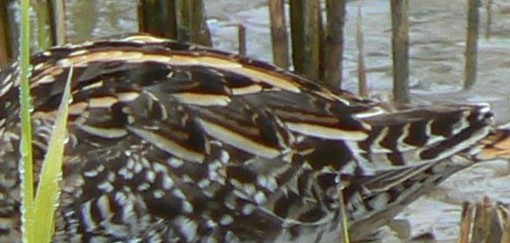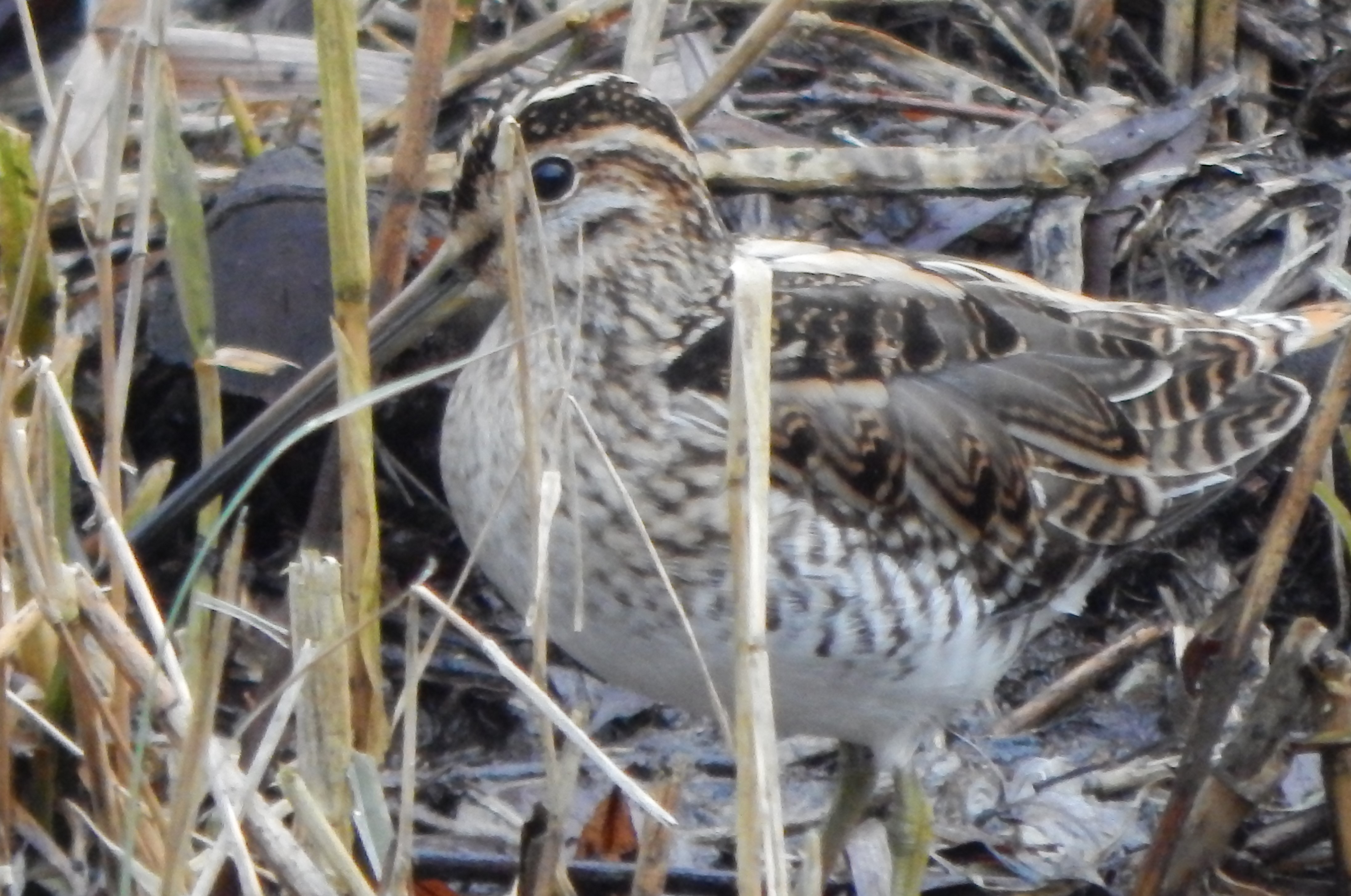
[156] Gallinago gallinago,Snipe
Introduction
Gallinago gallinago, the Snipe, is a wading bird with excellent camouflaged plumage that can make it difficult to spot.
About thirty species of birds from the three closely related genera Gallinago, Lymnocryptes and Coenocorypha are called Snipes – so officially Gallinago gallinago is the Common Snipe. I may just call it a Snipe.
Others birds in the family Rostratulidae, which is not so closely related, are called Painted Snipes.
Taxonomy
Kingdom – Animals
Phylum – Chordates
Class – Aves (Birds)
Order – Charadriformes
Family – Scolopacidae (Sandpipers including Curlews, Godwits, Snipes and others)
Genus – Gallinago
Scientific Name – Gallinago gallinago
Wilson’s Snipe, found all over North America, was until recently considered to be a subspecies but now has species status as Gallinago delicata.
Name
Snipe comes from Old Norse name for this bird. It is so well camouflaged and difficult to shoot that from the Eighteenth Century the word sniper has been used for a skilled hunter or shooter.
Gallinago is the Modern Latin name for a Snipe or Woodcock (a close relative.) It comes from gallina, the Latin for a hen (domestic chicken.)
Description
The Snipe is a medium sized wader with a relatively very long bill. The plumage is a mottled brown with marked longitudinal, light buff lines along its back.






The Snipe is shy bird that tends to keep close to reedy areas where it knows it is camouflaged. When flushed out and forced to fly it adopts an unusual zigzag flight pattern that makes it difficult to catch (unless you are an excellent sniper!)
It uses its long bill to probe muddy areas and feeds mostly on worms and insects.
Habitat
The Common Snipe has a wide range covering most of northern Eurasia in summer, and central Africa and southern Asia in winter. It is resident all year over much of Britain.
It is found in wet areas such as lakesides, marshes and bogs.
Other Notes
Snipe are generally seen either alone or in small groups. They are widespread but not common.
See also
Lymnocryptes minimus, the Jack Snipe, is a much rarer, slightly smaller bird that is difficult to distinguish. It has two central light stripes along the head separated by darker feathers, where the Snipe has a central light stripe. I have seen one occasionally, always a single bird hiding in a group of Common Snipe. The size difference is not enough for identification.
Scolopax rusticola, the Woodcock, is a related species that has adapted its way of life to inhabit woodland rather than wetland. It is much more uncommon than the Snipe. It is active around dawn and dusk and I have only ever seen them flying overhead in the Forest of Dean at dusk.
